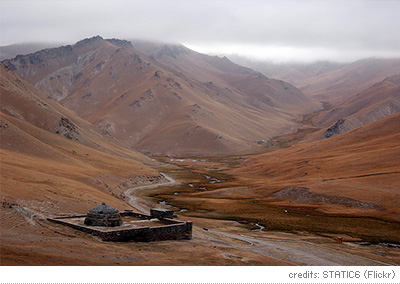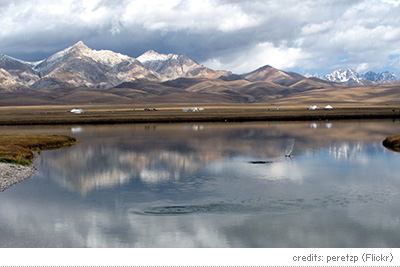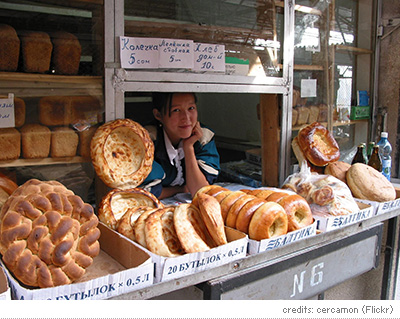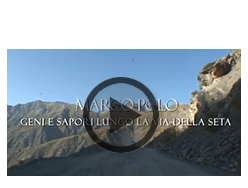The Project 2012
Their houses are circular, and are made of wands covered with felts.These are carried along with them whithersoever they go; for the wands are so strongly bound together, and likewise so well combined, that the frame can be made very light. Whenever they erect these huts the door is always to the south. They also have waggons covered with black felt so efficaciously that no rain can get in.
Marco Polo, Il Milione
Science and science communication along the Marco Polo trail
 In June 2012 the group of scientists, journalists and media representatives travels through Kirghizstan to continue the project started in 2010 along the Silk Road.
In June 2012 the group of scientists, journalists and media representatives travels through Kirghizstan to continue the project started in 2010 along the Silk Road.
Just as they did on the previous expeditions in 2010 and 2011, the travellers meet representatives from isolated communities of the Slow Food local network and collect DNA samples to explore the links between genetics, food preference and culinary traditions.
Research topics
MarcoPolo2012 (again like MarcoPolo 2010 and 2011) studies three main topics: population genetics, taste genetics and food preference genetics. Moreover, there are complemented studies on the genetics of smell, hearing and colour perception that, during the analysis, allow to understand better the other genetic data.
Researchers obtain these data through a series of quite simple tests:
- bitterness and saltiness taste tests;
- a questionnaire about their dietary preferences;
- a sense of smell test;
- a colour test;
- an audiometric test to measure hearing;
- a brief general questionnaire on their general state of health and lifestyle choices;
- a collection of saliva samples – from which the DNA can be extracted, so that a genetic analysis of the population can be carried out.
The local communities along the way play an active role in all the activities of the project thanks to the Slow Food network.
Science for everyone
 Again, like the previous expeditions, the whole enterprise (from design, to expedition, to data analysis) takes place entirely in the public eye.
Again, like the previous expeditions, the whole enterprise (from design, to expedition, to data analysis) takes place entirely in the public eye.
In this way, important scientific research become, in addition, an interactive and fascinating science communication project.
Before, during and after the expedition, a team of experts in science communication (writers, journalists, museum experts, photographers, directors and cameramen, multimedia developers, etc.) work closely with scientists in order to prepare a video of the expedition, materials for further exhibitions and events, activities with local participants etc., and to ensure a comprehensive and accurate media coverage of the entire project and its contents.
Communication and popularisation initiatives
 The journey, the topics and the research methods are used for popularisation initiatives at various levels:
The journey, the topics and the research methods are used for popularisation initiatives at various levels:
- Participative website with the blog of the expedition
- TV programmes: on specialised and entertainment channels
- Scientific and photo reports
- Series of books for different audiences and on various topics
- Great travelling, interactive and multimedia exhibition
Partners
- Institute for Maternal and Child Health IRCCS Burlo Garofolo, Trieste
- Sissa Medialab, Trieste
- Terra Madre




